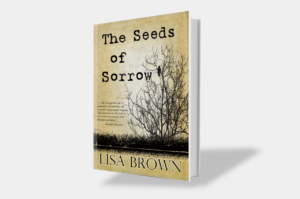
Capturing the Emotion
Creating emotion with high-quality photographs involves a combination of technical skills, artistic vision, and an understanding of human psychology. By carefully considering subject matter, composition, lighting, color, and post-processing techniques, photographers can craft images that resonate emotionally with viewers. The goal is to capture not just what the scene looks like, but what it feels like, creating a lasting impact that transcends the visual experience.
Importance of Emotion in Photography
- Connection: Emotional photographs create a connection between the viewer and the image, making it more memorable and impactful.
- Storytelling: Emotions help to convey a story, adding depth and meaning to the photograph.
- Engagement: Images that evoke emotions are more likely to capture and retain the viewer’s attention.
Elements of High-Quality Emotional Photographs
Subject Matter: Choose subjects that naturally evoke emotions. Human subjects, animals, and nature are often rich with emotional potential.
Composition: Use composition techniques to enhance the emotional impact. Rule of thirds, leading lines, framing, and symmetry can direct attention and create a more compelling image.
Lighting: Lighting sets the mood of a photograph. Soft, diffused light can create a calm and serene atmosphere, while harsh, directional light can add drama and intensity.
Color: Colors evoke different emotions. Warm colors like red and orange can convey passion and energy, while cool colors like blue and green can evoke calmness and tranquility.
Expression and Gesture: In portraits, facial expressions and body language are crucial for conveying emotions. Capture genuine moments to reflect true feelings.
Context and Background: The surroundings and background add context and can enhance the story and emotion of the photograph. Ensure that they complement the subject and do not distract from it.
Focus and Depth of Field: Use focus and depth of field to isolate the subject and draw attention to the emotional elements. A shallow depth of field can blur distractions and highlight the key emotional components.
Timing: Capturing the right moment is essential. Whether it’s a fleeting expression or a decisive action, timing can make or break the emotional impact of a photograph.
Techniques for Evoking Emotion
Candid Shots: Candid photographs often capture genuine emotions and spontaneous moments, making the image feel more authentic and relatable.
Close-Ups: Close-up shots of faces or details can intensify emotions by focusing on the expressions or significant elements that tell a story.
Movement: Incorporate movement to add energy and life to a photograph. Blurring motion can convey action and dynamism, while freezing a moment in time can capture a critical emotional instance.
Contrast: Use contrast in lighting, color, and texture to highlight emotional aspects and create visual interest.
Narrative: Build a narrative with your photograph. Think about what story you want to tell and how each element in the frame contributes to that story.
Post-Processing for Emotional Impact
Enhancing Colors: Adjust color saturation and balance to evoke the desired emotions. Warm tones can make an image feel cozy and inviting, while cooler tones can create a sense of calm.
Adjusting Contrast and Brightness: Fine-tune contrast and brightness to add depth and highlight key emotional elements.
Sharpening and Clarity: Enhance details that contribute to the emotional narrative. Be careful not to over-sharpen, as it can detract from the natural feel of the photograph.
Selective Focus and Blur: Use selective focus and blur effects to guide the viewer’s attention to the emotional focal points of the image.
Black and White: Convert images to black and white to emphasize textures, contrasts, and emotions without the distraction of color.

Warren Armstrong

Jeff Brown worked with us to relocate and upgrade one veterinary website and create a new website for the other veterinary practice. He helped us through the design phase to get our ideas into the final product, to make our websites flow and to set them up easily with a new host. Jeff is creative, efficient and reliable.







